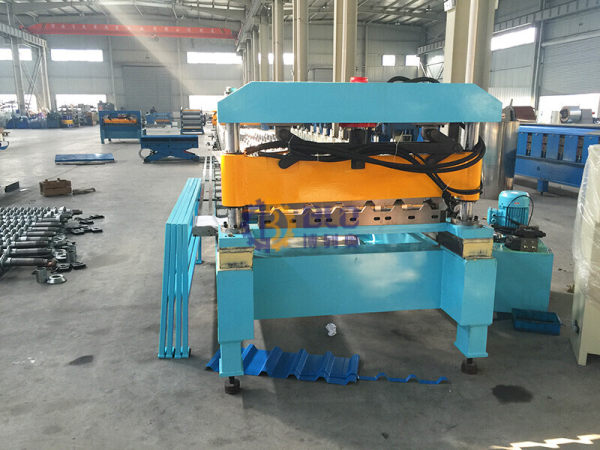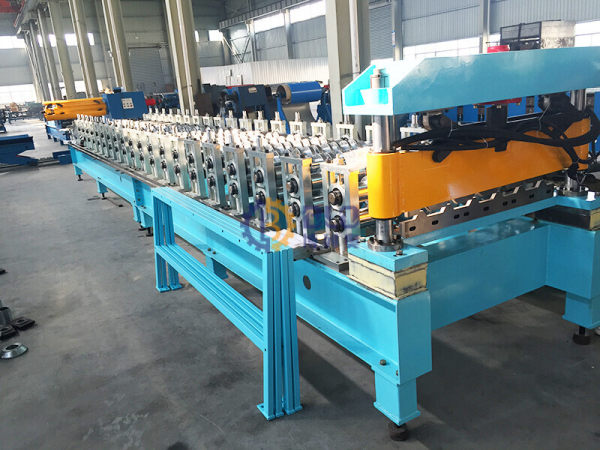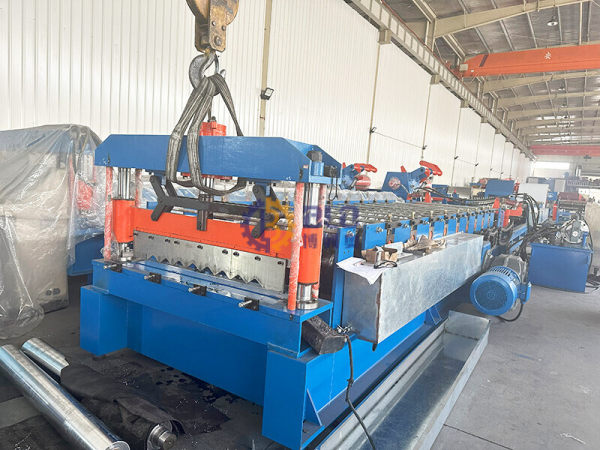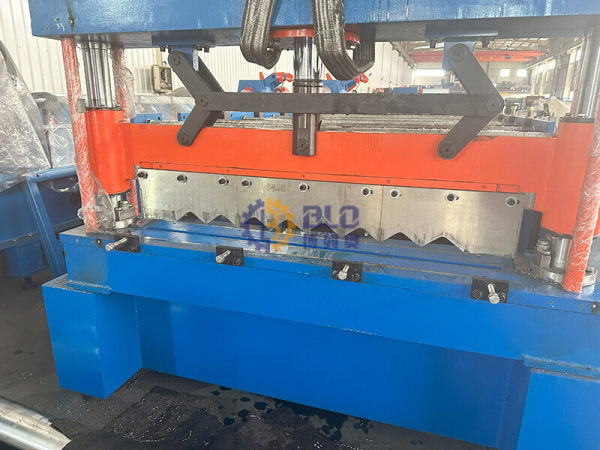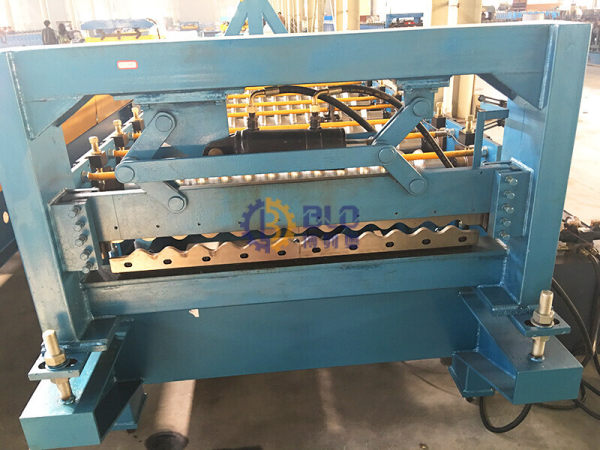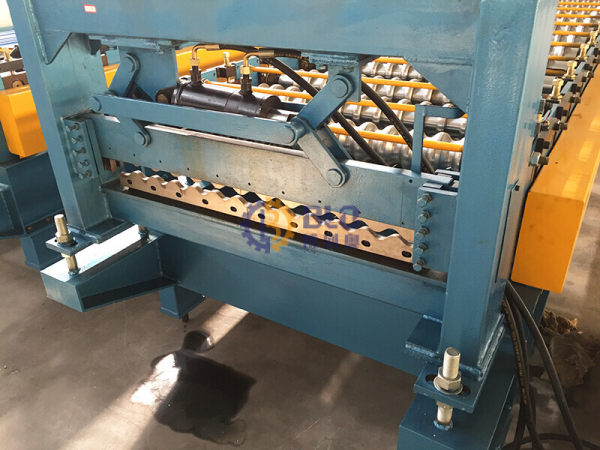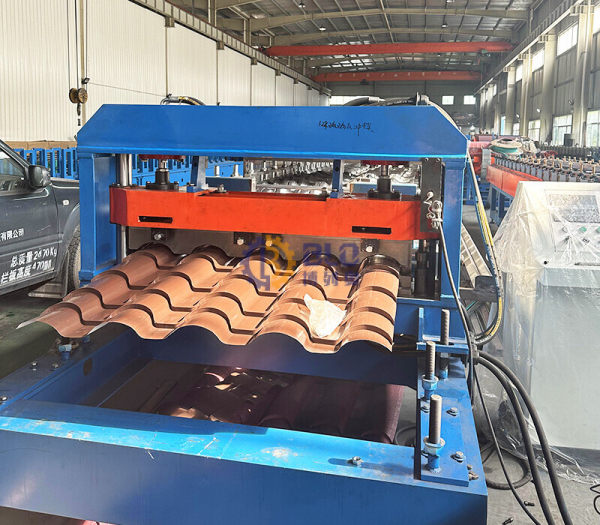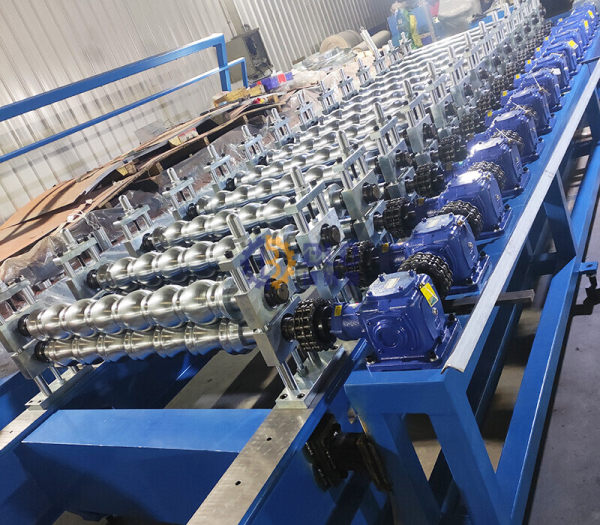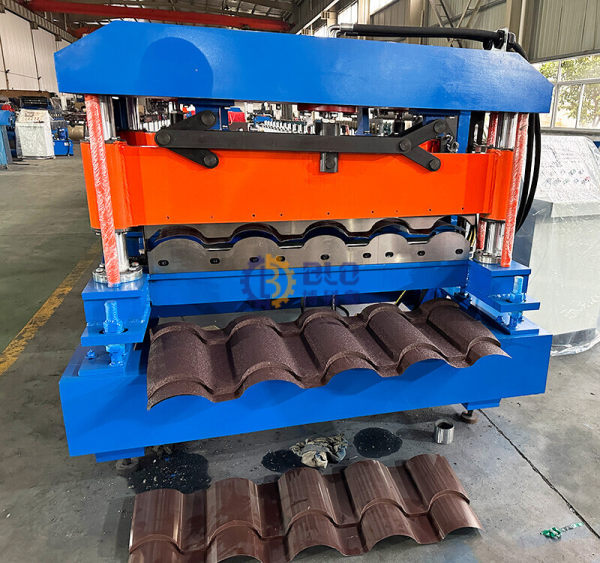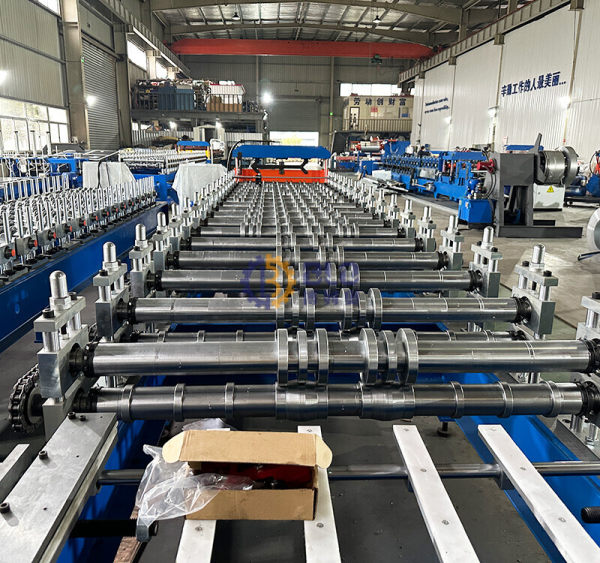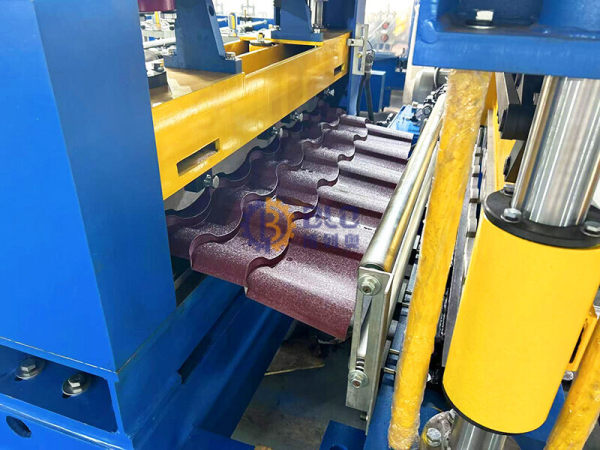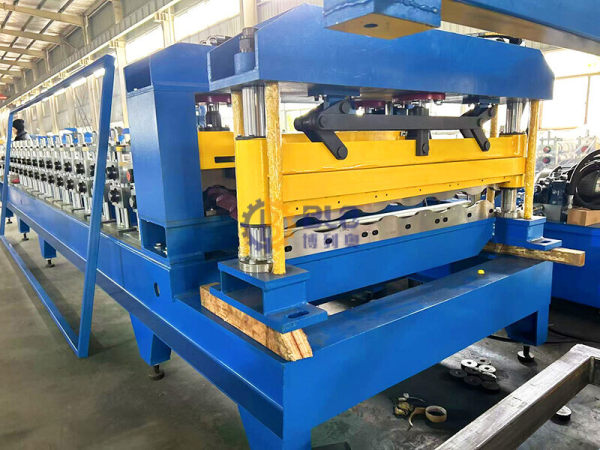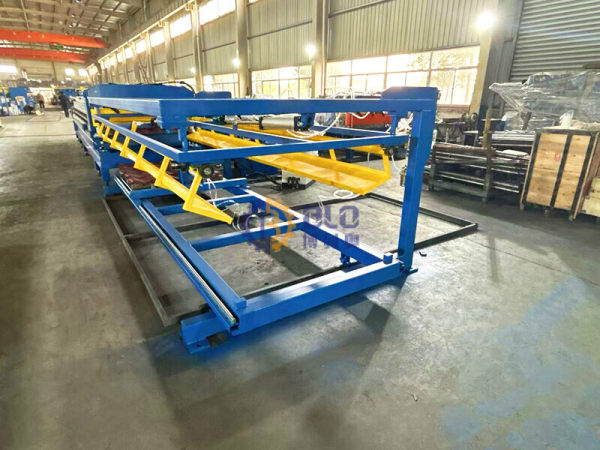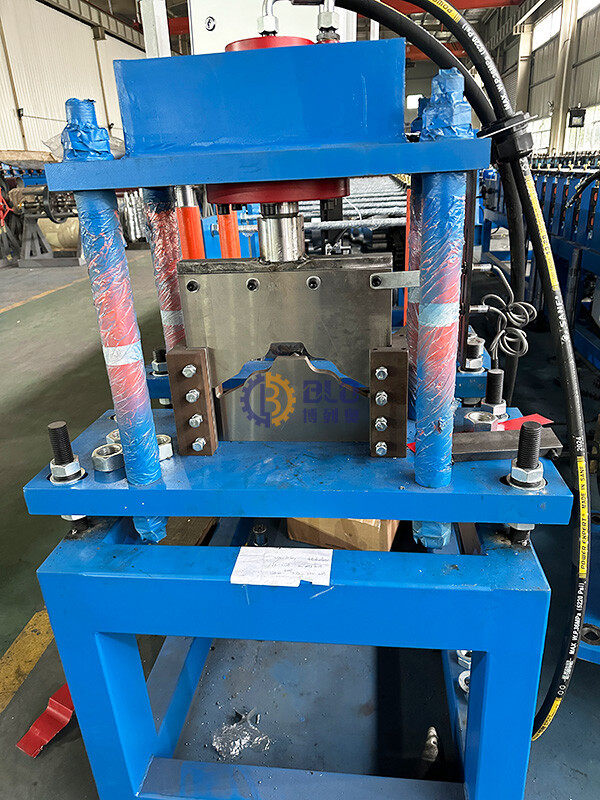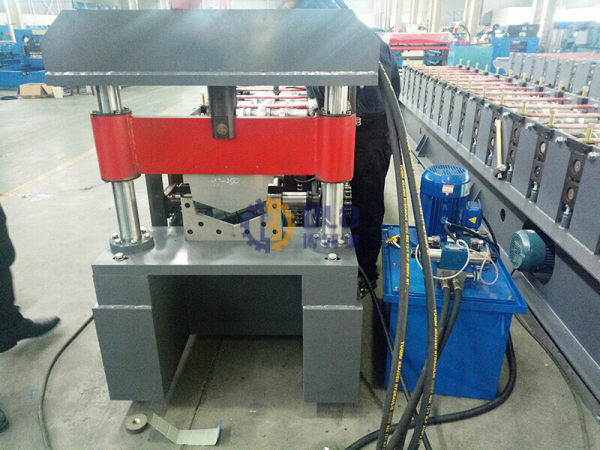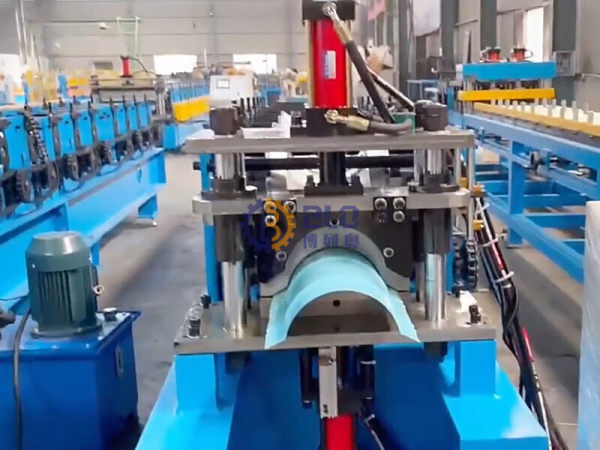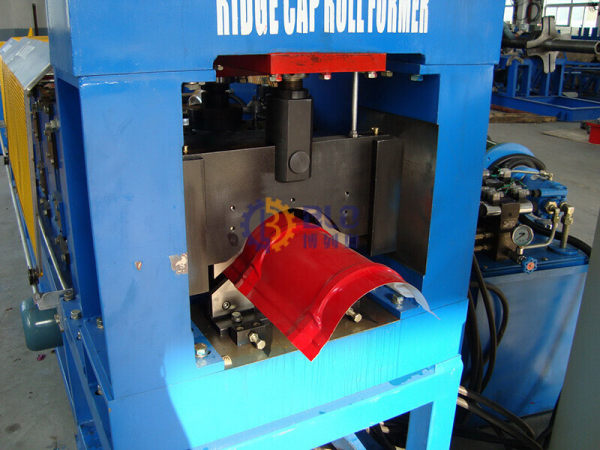01
Roll Forming Machine For Metal Roof
Trapezoidal Roof Panel Roll Forming Machine
A trapezoidal roof roll forming machine is used to manufacture trapezoidal-shaped metal roofing sheets, which are commonly utilized for industrial, commercial, and residential buildings due to their durability and aesthetic appeal. The machine operates by continuously feeding metal coils through rollers to form the desired profile.
These machines ensure high productivity, uniform quality, and efficient manufacturing of trapezoidal roofing sheets for large-scale construction projects.


High speed Trapezoidal sheet Roll Forming Machine
The trapezoidal sheet roll forming machine operates through the following steps:
Material Loading: Metal sheets (typically PPGI, GI, or aluminum) are loaded onto a decoiler, which unwinds the material for processing .
Feeding and Straightening: The flat metal sheet is fed into the machine, where it is aligned and straightened to ensure smooth processing .
Roll Forming: The material passes through multiple rollers designed to gradually bend it into the trapezoidal shape. The rollers apply pressure to achieve precise profiles without damaging the material .
Cutting to Length: A hydraulic or servo-driven cutting system trims the formed sheet to the desired length, ensuring minimal waste and high accuracy .
Collection and Stacking: The finished sheets are collected and stacked for packaging or direct dispatch. Advanced machines may feature automatic stacking systems for efficiency .
Control System: Most machines are equipped with PLC for automated operation, allowing precise settings for speed, length, and shape adjustments .
This process ensures high production efficiency and consistency in the finished trapezoidal sheets.
Corrugated roof roll forming machine
A corrugated roof roll forming machine consists of the following main parts, each playing a vital role in the production process:
Decoiler: Holds and feeds the metal coil into the machine. It can be manual or automatic and ensures smooth uncoiling of material .
Feeding and Guiding Mechanism: Guides the flat metal sheet into the forming rollers, ensuring alignment and consistent material feed .
Roller Stations: The core part of the machine where a series of rollers gradually bend the metal into the desired corrugated shape. Each roller performs a specific bending operation, enabling precise shaping .
Cutting Mechanism: Typically a hydraulic or mechanical cutter that trims the corrugated panels to the required length after forming .
Drive System: Includes motors, gears, and chains that power the rollers and move the material through the machine .
Control System: Often computer-based, it controls the machine’s operations, such as speed, material feed, and cutting length. Some systems include automation for higher precision and efficiency .
Run-Out Table: Collects the finished corrugated sheets for easy handling and stacking after production .
These components work together to produce high-quality corrugated roofing sheets efficiently.
Corrugated Tile Roof Roll Forming Machine
The workflow of a corrugated tile roof roll forming machine typically involves the following steps:
Material Feeding,Leveling and Guiding,Roll Forming,Pressing and Stepping,Cutting to Length,Product Collection.This workflow ensures efficient and continuous production of high-quality corrugated roofing tiles.
The future development of corrugated tile roof roll forming machines will focus on the following key trends:
Automation and IoT Integration: Advanced automation technologies, coupled with IoT integration, will make machines smarter and more efficient. Real-time monitoring, remote control, and predictive maintenance will become standard features, enhancing productivity and reducing downtime .
Artificial Intelligence (AI): AI-powered systems will optimize production processes, including material usage, speed adjustments, and error detection. This will improve accuracy and ensure consistent product quality .
Energy Efficiency and Sustainability: Manufacturers will emphasize sustainability by incorporating energy-efficient systems and using recyclable materials. This trend aligns with global efforts to reduce the environmental impact of industrial processes .
Versatility and Customization: Machines will become more versatile, capable of producing a wider range of roofing profiles and designs to meet diverse market demands. Modular components will allow for easy customization and adaptation to new requirements .
Overall, the industry will continue to adopt cutting-edge technologies to improve efficiency, sustainability, and adaptability.
02
Glazed tile panel roll forming machine
Tile Roof Roll Forming Machine
A Tile Roof Roll Forming Machine is designed to produce metal roofing tiles with a stepped or glazed design, commonly used in residential and commercial roofing applications. These machines are known for their precision, durability, and efficiency.
These machines ensure uniform quality, high production speed, and cost efficiency for roofing projects.
Glazed tile roll forming machine
Glazed tile roll forming Machine is a specialized industrial machine used to produce roofing sheets with a design that mimics traditional clay or concrete tiles. These machines process metal sheets, such as galvanized steel, aluminum, or pre-painted coils, into precise roofing profiles through a series of rollers.
Applications:
Residential Roofing: Used to create durable and visually appealing roofing materials with the look of classic tiles but enhanced strength .
Commercial Projects: Ideal for warehouses, offices, and industrial buildings that require lightweight and strong roofing panels.
Construction Industry: Suitable for regions where aesthetics, durability, and resistance to weather conditions are essential .
Glazed Roof Tile Roll Forming Machine
The Glazed Roof Tile Roll Forming Machinemachine operates through the following steps:
Material Loading: Metal sheets (typically PPGI) are loaded onto a decoiler, which unwinds the material for processing .
Feeding and Straightening: The flat metal sheet is fed into the machine, where it is aligned and straightened to ensure smooth processing .
Roll Forming: The material passes through multiple rollers designed to gradually bend it into the trapezoidal shape. The rollers apply pressure to achieve precise profiles without damaging the material .
Cutting to Length: A hydraulic or servo-driven cutting system trims the formed sheet to the desired length, ensuring minimal waste and high accuracy .
Collection and Stacking: The finished sheets are collected and stacked for packaging or direct dispatch. Advanced machines may feature automatic stacking systems for efficiency .
Control System: Most machines are equipped with programmable logic controllers for automated operation, allowing precise settings for speed, length, and shape adjustments.
Glazed Roof Tile Roll Forming Machine With Side shift palletizing
A glazed roof tile roll forming machine with side-shift palletizing integrates both tile forming and efficient material handling into a streamlined process. Here's how the system works:
Material Input and Roll Forming: The machine processes metal coils into glazed roof tiles with high precision, creating various profiles and step designs as required. These machines can accommodate different thicknesses, shapes, and colors .
Step Tile Pressing: The tiles are formed with "steps" for added strength and aesthetic appeal. The process typically involves advanced hydraulic or servo systems for consistent results .
Side-Shift Palletizing: The integrated side-shift palletizing system automates the handling of finished tiles by stacking them efficiently onto pallets. This feature enhances production efficiency by reducing manual intervention and optimizing space management .
High-Speed Output: With speeds of up to 10 m/min, the machine ensures high-volume production suitable for industrial use .
Automation Features: PLC controls allow easy adjustment of profiles and production parameters, ensuring flexibility and reliability .
This combination of advanced roll forming and automated palletizing is ideal for manufacturers seeking high efficiency and reduced labor costs.
03
Roof Gutter,Ridge Cap,Downsput Pipe Roll Form Machine
Ridge Cap roll forming machine
A ridge cap roll forming machine is specialized equipment designed for producing ridge caps, which are essential roofing components installed along the top roof ridge to protect against weather elements.
These machines are highly efficient, using raw materials such as metal sheets with a thickness of 0.3–0.8mm.
Applications:
Residential Roofing:Produces gutters for houses and small buildings.
Commercial and Industrial Roofing:Used for larger structures like warehouses, factories, and office buildings.
Agricultural Buildings:Provides durable gutters for barns, sheds, and storage facilities.
Custom Projects:Suitable for creating gutters with unique designs or specifications.
Verge board roll forming machine
A verge board roll forming machine is specialized equipment used to manufacture verge boards, which are protective or decorative elements installed along the edges of roofs to shield them from weather elements. These machines are commonly used in roofing and wall panel manufacturing.
Key features include:
1.Customizability: Can produce verge boards in various sizes and lengths to meet specific project requirements .
2.Applications: Widely used in residential, commercial, and industrial roofing projects, ensuring durability and protection against environmental conditions .
3.Materials: Compatible with different metals such as galvanized steel and aluminum, providing strong and weather-resistant outputs.
4.Automation: Equipped with advanced control systems for efficient, high-speed production.
Ridge flashing with round top roll forming machine
Ridge cap roll forming machinery with a rounded top is specifically designed to produce ridge caps with a curved profile. These caps are critical for roofing systems, as they are installed along the top ridge of sloped roofs to seal the joint and prevent water or debris infiltration.
These machines are commonly offered as fully customized solutions to meet specific customer needs. Manufacturers provide standard designs as well as tailored profiles to match architectural requirements.

Roof gutter roll forming machine with three profiles
Roof gutter roll forming machines are used to produce seamless gutters and downspouts for residential, commercial, and industrial roofing systems.
These machines convert metal coils (such as galvanized steel, aluminum, or color-coated steel) into gutter profiles through a continuous roll forming process.
Types of Gutters Produced:
K-Style Gutters:Flat-backed with a decorative front, commonly used in residential buildings.
Half-Round Gutters:Semi-circular shape, often used in traditional or historic buildings.
Box Gutters:Rectangular shape, typically used in commercial or industrial buildings.
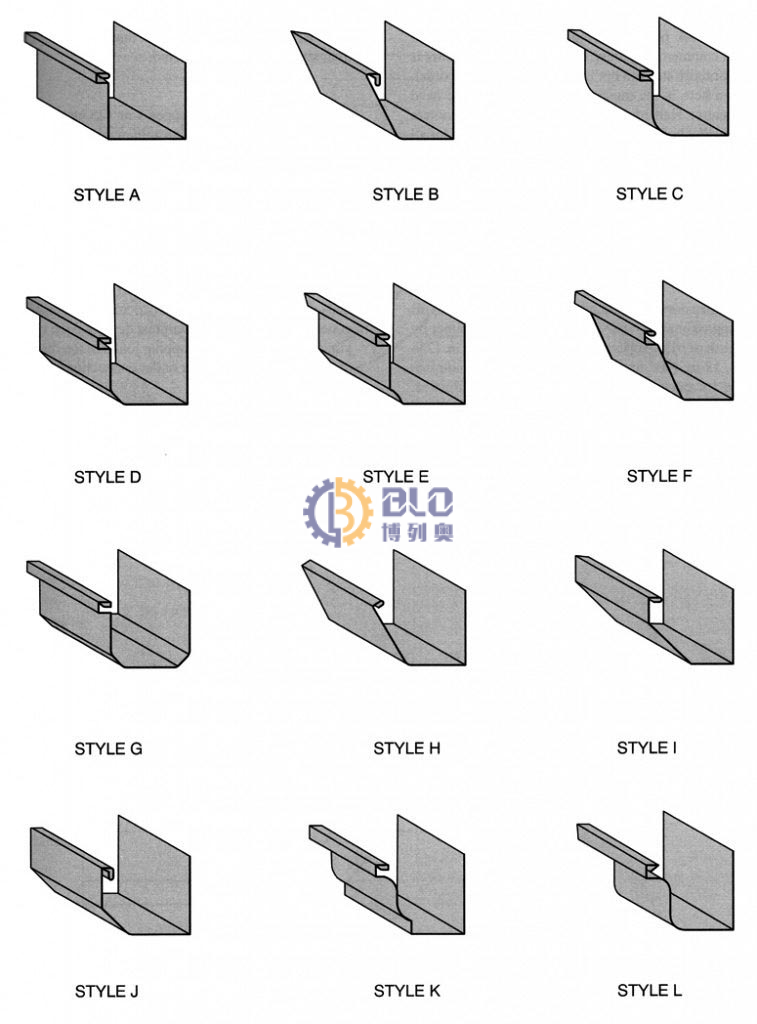
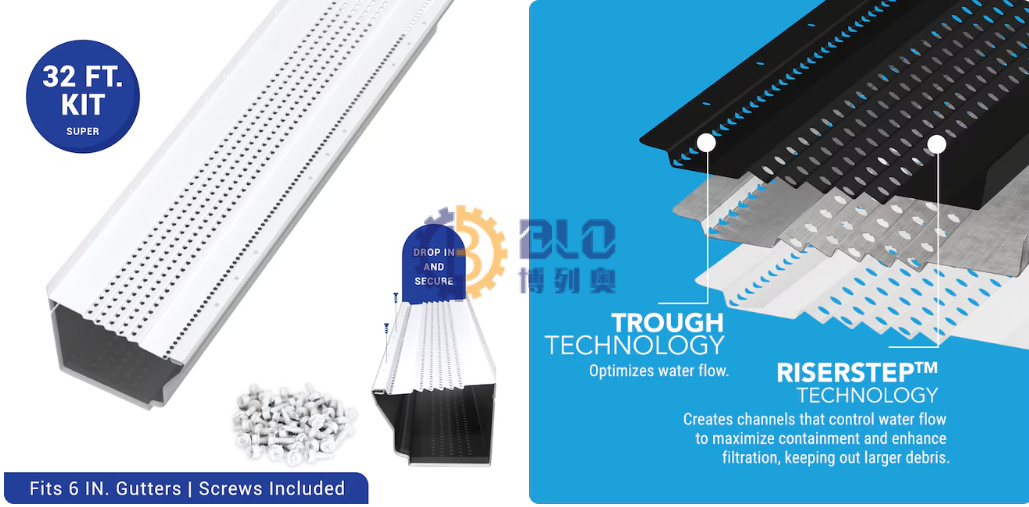
Downspout /Downpipe roll forming machine
A downspout/downpipe roll forming machine is designed for the efficient production of downspouts, also known as rainwater pipes. These pipes are vital components of rainwater drainage systems, used to channel water from gutters to the ground or designated areas.

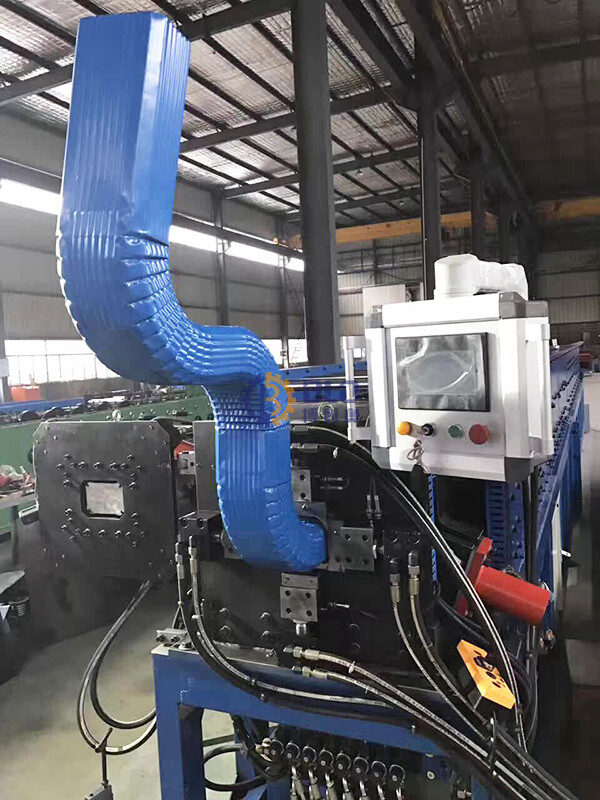
Key Features:
Materials:Supports aluminum, galvanized steel, stainless steel, and copper for long-lasting pipes.
Production Capacity:Produces square, rectangular, and round profiles.
Common sizes include: 2×3, 3×3, 3×4, and 4×5 inches.
Automation:Equipped with PLC control systems for precision and reduced labor intensity.
Performance:High-speed production, typically 10-30 meters per minute.
Applications:Primarily used for residential, commercial, and industrial drainage systems, offering durable and customizable solutions for efficient water management.
These machines are available in both standard and custom configurations to meet specific production needs.
While gutter systems are simple, they are made up of many different moving parts that help the gutter system work at max efficiency. Gutters function as your outdoor plumbing. It’s essential to mitigate that rainwater away from the foundation of your home and roof.
Cold roll forming equipment plays a crucial role in manufacturing components for gutter systems. Here’s an overview of the types of equipment and products it can provide for drainage systems: Gutter Channels,Downspouts,Gutter Brackets/Hangers, End Caps,Gutter Aprons,Splash Blocks,Custom Profiles.
Cold roll forming equipment is essential for producing high-quality, durable, and customizable components for gutter systems. It offers efficiency, precision, and versatility, making it a valuable solution for manufacturers of drainage systems. Whether for residential, commercial, or industrial applications, cold roll forming ensures that gutter systems are both functional and aesthetically pleasing.
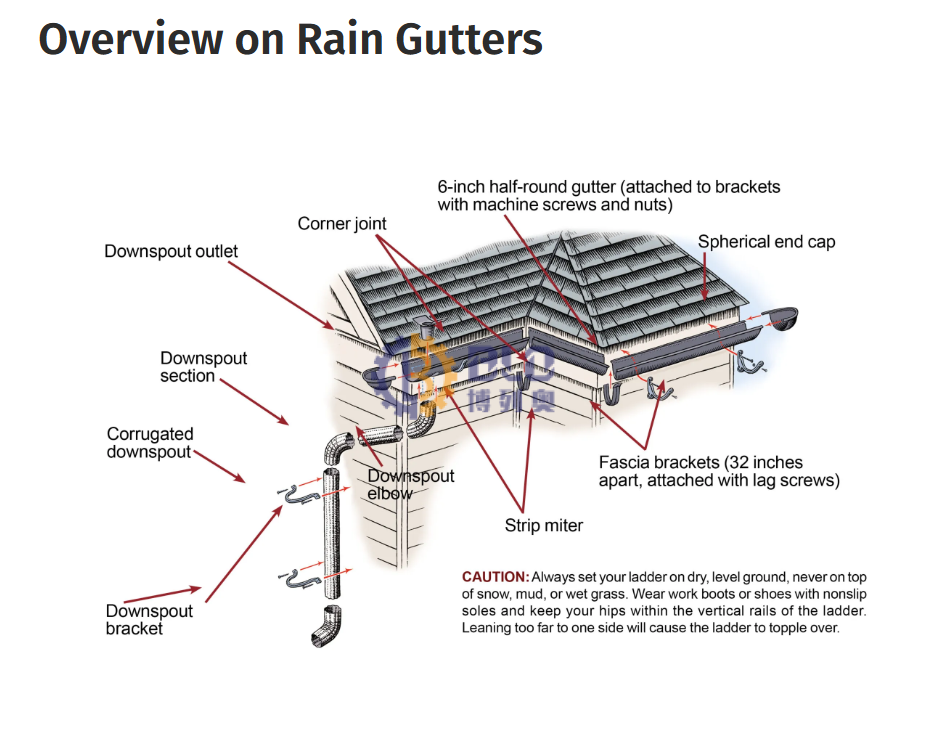
Ask For A Quick Quote
If you are looking for more information on our services, or how we could potentially help, we would love to hear from you!

